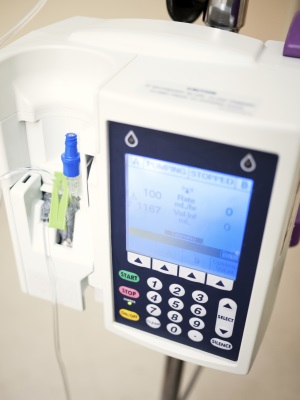SABIC EXPANDS CHEMICALLY RESISTANT LNP™ CRX PORTFOLIO WITH FOUR NEW SUSTAINABLE, THIN-WALL FLAME RETARDANT COPOLYMERS WELL-SUITED FOR HEALTHCARE AND CONSUMER ELECTRONICS
SABIC, a global leader in the chemical industry, has expanded its portfolio of exceptionally chemically resistant LNP™ CRX polycarbonate (PC) copolymer resins with four new grades, featuring sustainability, thin-wall flame retardancy (FR), low-temperature ductility and ultraviolet (UV) stability, well-suited for healthcare and consumer electronics applications. There are two product pairs, each with a bio-based version that can further reduce environmental impacts and help lower carbon footprint. These high-performance materials can help meet customer demands for world-class resistance to chemicals ranging from the harsh disinfectants widely used in healthcare applications to sunscreen and hand creams that often come in contact with consumer electronics devices. The new LNP CRX grades also offer the potential to enhance regulatory compliance and design flexibility.
“SABIC is continuously improving our material families to deliver greater value to our customers, and our new LNP CRX products are excellent examples of this,” said Joshua Chiaw, director, Business Management, LNP & NORYL, Specialties, SABIC. “These advanced technologies provide sustainability enhancements, including the incorporation of non-brominated/non-chlorinated flame retardants. They also comply with thin-wall flame retardant ratings, offering the potential to reduce part thickness and raw material usage.”
All of these products support the European Union’s Directive 2019/2021 under Point D, Annex II of the Ecodesign Regulations for Electronic Displays.
NEW SOLUTIONS FOR INDUSTRY CHALLENGES
For the healthcare industry, the new LNP ELCRES™ CRX7412U copolymer and its bio-based version, LNP ELCRIN™ CRX7412UB copolymer, offer limited biocompatibility according to ISO 109931. They are candidates for replacing incumbent PC, acrylonitrile-butadiene-styrene (ABS) and polyester/co-polyester materials in thin-wall applications such as housings, diagnostic and monitoring devices, and durable medical equipment.
Not only do LNP ELCRES CRX products demonstrate compatibility with the most aggressive disinfectants on the market—alcohols, peroxides and quaternary ammonium compounds—they also deliver excellent mechanical performance, notably a good balance of impact and ductility.
The other two grades, LNP ELCRES CRX7416U copolymer and its bio-based version,
LNP ELCRIN CRX7416UB copolymer, are well suited for demanding consumer electronics and mobility applications such as mobile device housings and battery covers. These products can potentially meet stringent requirements for chemical resistance and low temperature ductility (-60°C) better than many competitive materials, including PC/ABS and polycarbonate/polybutylene terephthalate (PC/PBT) blends.
SIGNATURE CHEMICAL RESISTANCE
Frequent disinfection of hospital equipment can cause polymers to develop environmental stress cracking (ESC), which can lead to part degradation and failure. Similarly, repeated exposure to sunscreen, skin oils and lotions can cause ESC in smartphone cases and other consumer electronics applications. SABIC’s LNP CRX copolymer resins address this problem by delivering improvements in chemical resistance over traditional materials such as PC or impact-modified blends. Using these new materials can help customers extend device life and avoid costly, premature replacement.
The new LNP CRX grades maintain this signature high chemical resistance while adding value through improved thin-wall FR capability. Thin-wall molding is becoming increasingly important in the design of smaller and lighter-weight applications like portable and hand-held medical equipment, as well as tablets, smartphones and wearable electronics. The new grades meet the UL 94 V0 standard at very thin gauges: 1.2 mm for LNP CRX7412U/B copolymers and 1.0 mm for LNP CRX7416U/B copolymers.
BIO-BASED GRADES WITH ISCC+ DESIGNATION
Bio-based LNP ELCRIN CRX copolymer resins help enhance sustainability through the incorporation of renewable feedstock derived from non-fossil waste materials that do not compete with the food chain. This content is compliant with the Registration, Evaluation, Authorization and Restriction of Chemicals (REACH)2 regulation and the Restriction of Hazardous Substances (RoHS)3 directive. An internal life cycle analysis conducted in accordance with ISO 14040/14044 protocols revealed
LNP ELCRIN CRX7412UB resin can offer reductions in carbon footprint of up to 36 percent when compared to the fossil-based version, LNP ELCRES CRX7412U resin, enabling the bio-based material to earn the International Sustainability and Carbon Certification Plus (ISCC+) designation.
LNP ELCRIN CRX7416UB resin can offer the same reduction in carbon footprint of up to 36 percent for consumer electronics and mobility applications. Critically reviewed SABIC primary data, combined with the latest manufacturing data and industry average estimates, was used in the cradle-to-gate comparison of these resins.
“The plastics industry has long struggled to develop solutions that maintain high chemical resistance with non-brominated/non-chlorinated flame retardants and also offer an improved sustainability footprint,” said Luc Govaerts, technology director, Specialties, SABIC.
“Our scientists and engineers have overcome this challenge with the introduction of the new LNP ELCRIN CRX grades, demonstrating a major step forward in the development of advanced material technologies that incorporate bio-based content with outstanding durability. This combination gives customers a broader array of high-performance material solutions for a wide range of applications across multiple industries.”
The four new LNP CRX copolymers are available globally.
1) ISO 10993 Part 5 for toxicity, Part 10 for skin sensitization, and Part 23 for irritation
2) Regulation EC 1907/2006 and related ECHA list of restricted substances
3) Directives 2011/65/EU, 2015/863/EU, 2017/2102/EU and amendments















 粤公网安备 44190002005717号
粤公网安备 44190002005717号